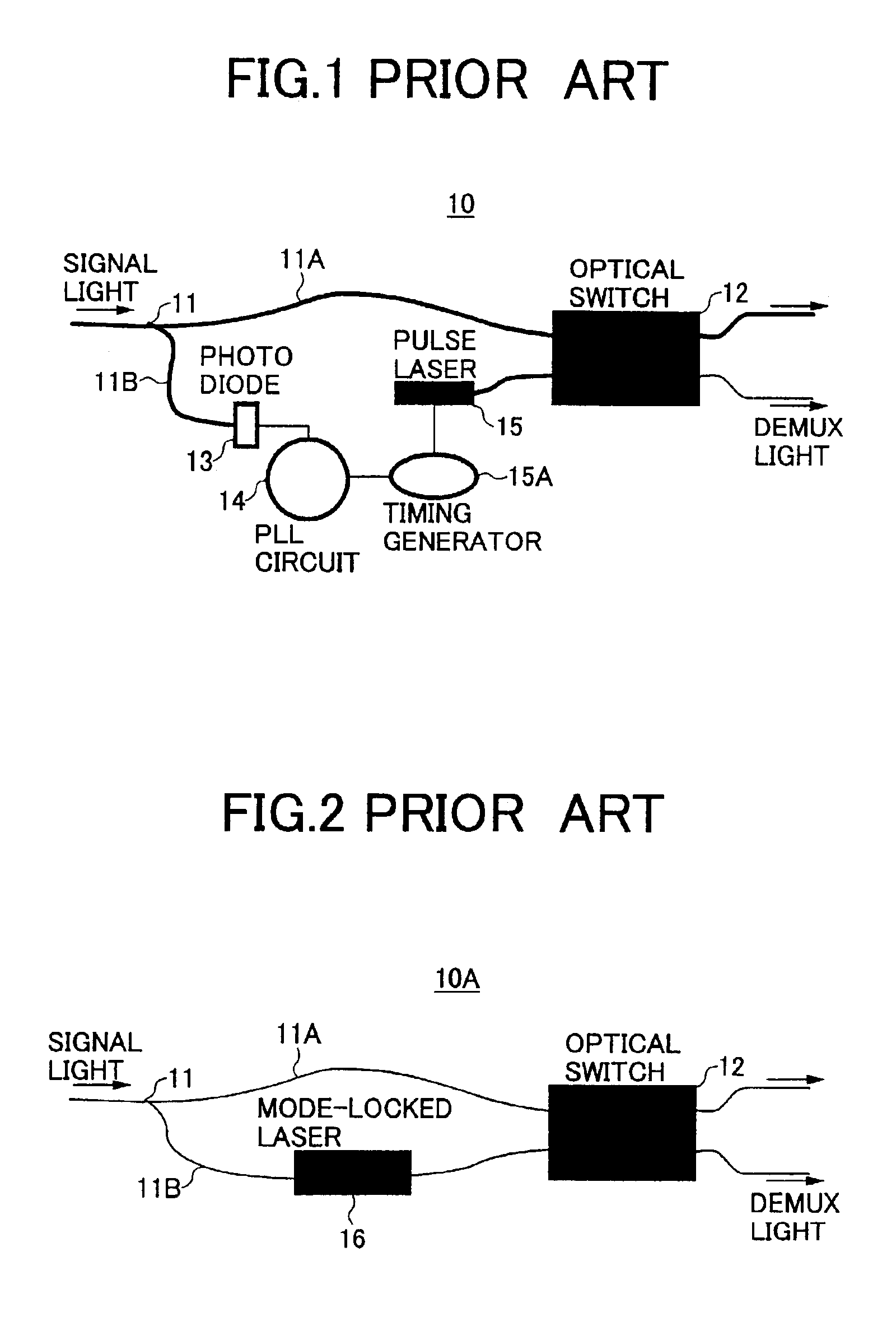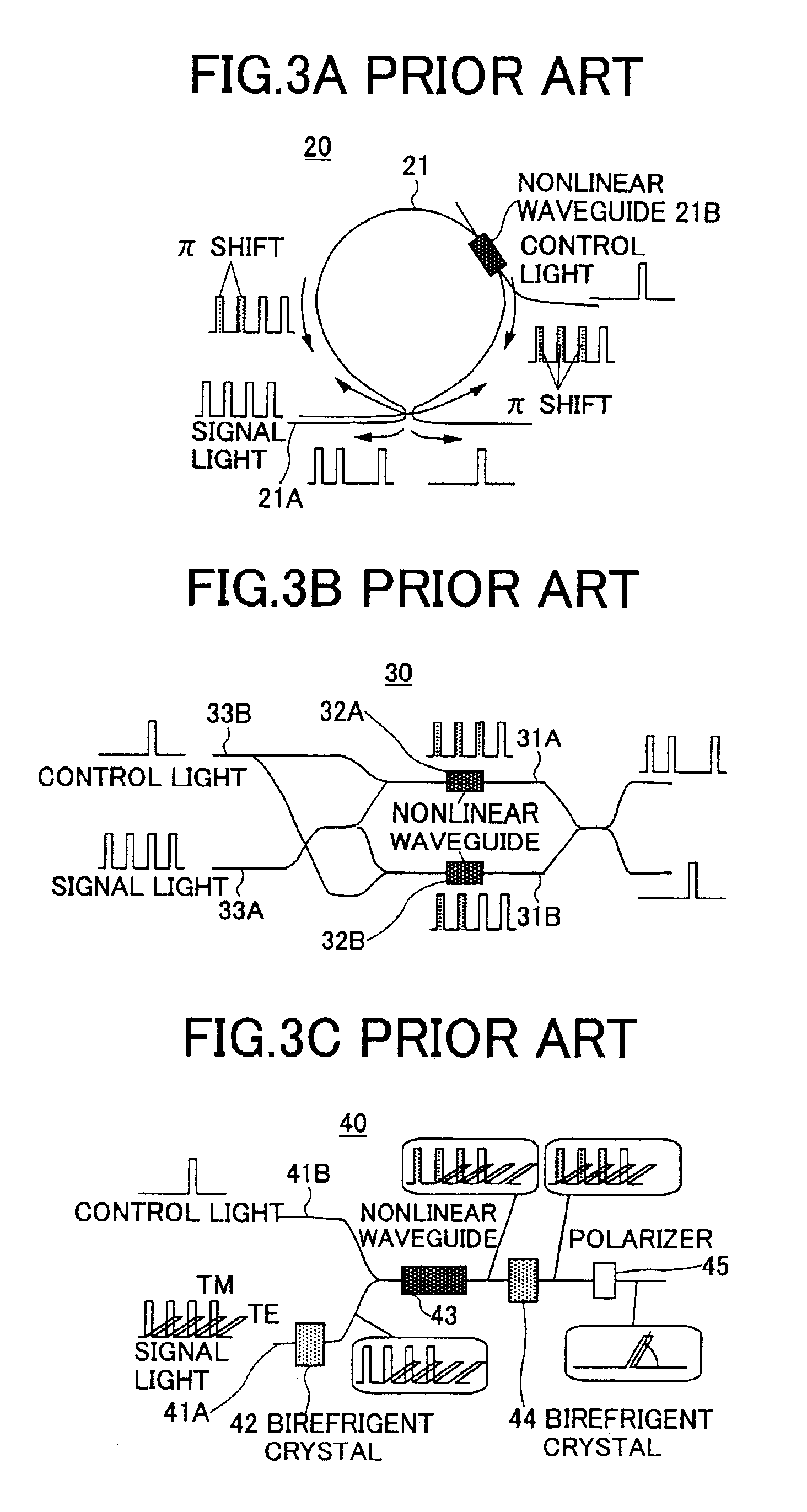Optical interferometer generating a mode-locked laser oscillation, all-optical switch, all-optical asymmetric demultiplexer and all optical pulse reshaping apparatus
a mode-locked laser and interferometer technology, applied in the field of optical elements, can solve the problems of difficult implementation of light receiving elements, complex and large structure of optical asymmetric demultiplexing signal processing system, and inability to achieve the response speed required to detect optical signals
- Summary
- Abstract
- Description
- Claims
- Application Information
AI Technical Summary
Benefits of technology
Problems solved by technology
Method used
Image
Examples
sixth embodiment
A description will now be given of a control method of the mode-locked higher harmonic that is used under the present invention and an optical asymmetric demultiplexer, which adopts the control method therein, according to the present invention.
Regarding a normal mode-locked laser, the order of a higher harmonic of the mode-locked light increases as a more amount of current is injected to a gain medium. Thus, it is possible to obtain a desired order of higher harmonic of the mode-locked light without the use of a special structure. However, if a certain structure to be mentioned in the following is adopted, it is possible to stable an operation of the mode-locked laser.
FIGS. 20A and 20B show two cases regarding the control method of the mode order of a mode-locked laser by using a colliding mode lock. One is the case in which an end surface of an optical cavity is covered with a high reflective film. The other is the case in which an end surface of an optical cavity is not covered w...
PUM
 Login to View More
Login to View More Abstract
Description
Claims
Application Information
 Login to View More
Login to View More - R&D
- Intellectual Property
- Life Sciences
- Materials
- Tech Scout
- Unparalleled Data Quality
- Higher Quality Content
- 60% Fewer Hallucinations
Browse by: Latest US Patents, China's latest patents, Technical Efficacy Thesaurus, Application Domain, Technology Topic, Popular Technical Reports.
© 2025 PatSnap. All rights reserved.Legal|Privacy policy|Modern Slavery Act Transparency Statement|Sitemap|About US| Contact US: help@patsnap.com



